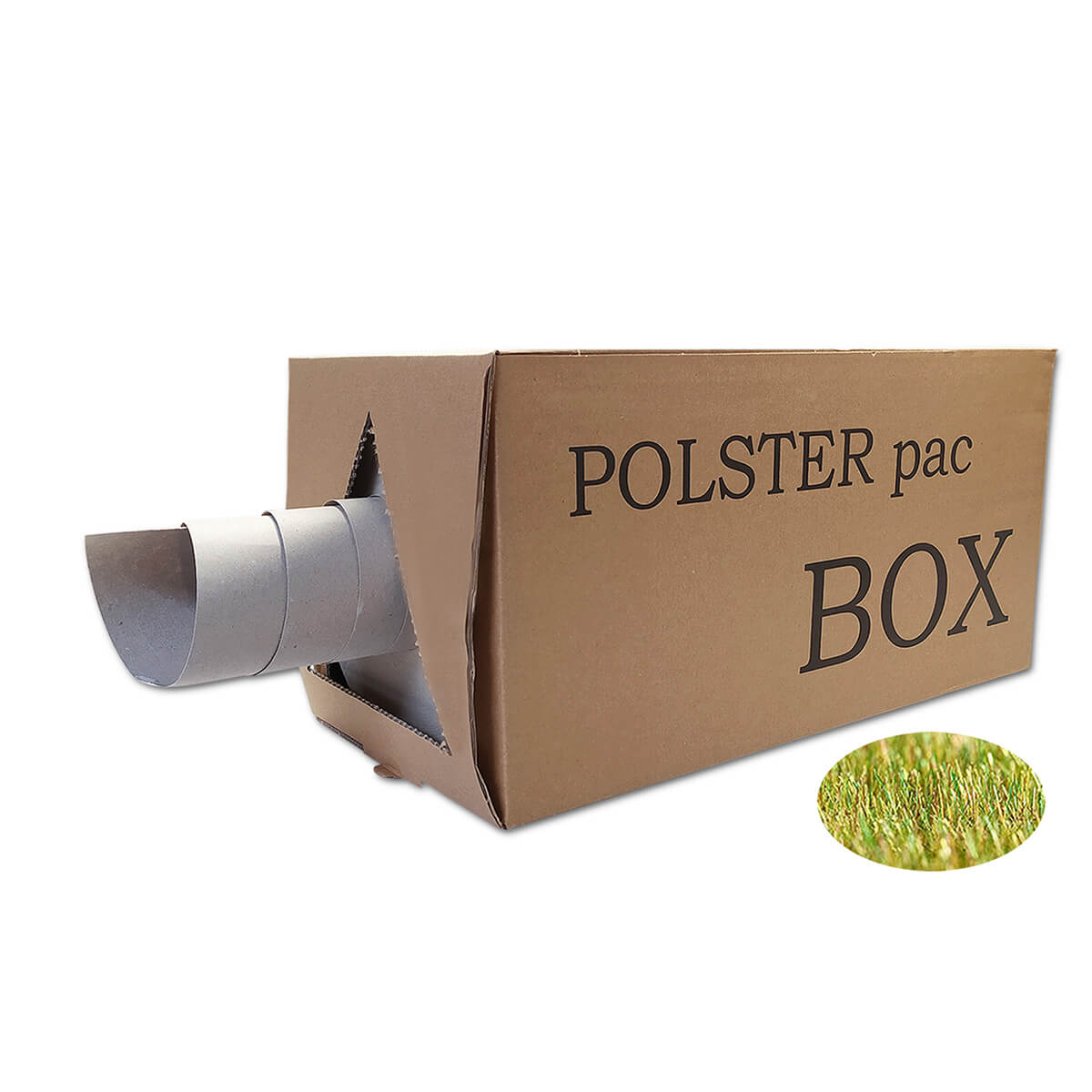- Bogus paper / Wrapping paper
- Dimensions (width x length): 50cm x 250m on roll
- Weight: approx. 80g/sqm
- Shock-absorbing
- max. per parcel: 3
- max. per pallet: 60
143 on Stock, delivery time 1-2 days
- Silk paper / bogus paper
- Dimensions / sheet: 50 x 75 cm
- Paper weight: approx 25g/sqm
- Sale units: 1kg / package
- shock-absorbing, scratch protection
- max. per parcel: 30
- max. per pallet: 690
- Padding paper on roll -> ALTERNATIVE TO AIR CUSHIONING FILMenvironmentally friendly padding of various goodsfor optimal transport protectionDimensions: 50 cm x 70 m, equivalent to 35 m²Material: made of 100% recycled paper, quality: 130 g/m²
- max. per parcel: 4
- max. per pallet: 48
171 on Stock, delivery time 1-2 days
- Kraft paper on roll
- Roll width: 50 cm, roll length: approx. 300 m
- Quality: approx. 70g/m²
- ideal for wrapping and designing
- Color: Brown
- max. per parcel: 2
- max. per pallet: 60
102 on Stock, delivery time 1-2 days
- Parcel paper is suitable for protecting items when moving or filling voids and gaps in shipping boxesDimensions of the box: 20 x 20 x 38,5 cm | weight: 6,0 kg | roll length: 200 m | made of recycled paper 80 g/m² Schrenzpapier paperhandy paper dispenser box is immediately ready for use without any further aidsCrinkle paper is conveniently pulled out of the outer boxPaper can be easily torn off by hand to the desired quantity
- max. per parcel: 4
- max. per pallet: 72
70 on Stock, delivery time 1-2 days
- Schrenzpapier as padding and filling material to protect the goods in cardboard boxesideal for wrapping delicate items, often used as moving materialSize: 50 x 75 cm, paper quality: 100 g/m², weight: 1 kgSheet material, material: 100 % recycled paperenvironmentally friendly padding material, easy and clean handling
- max. per parcel: 30
- Parcel paper is suitable for protecting items during moves or for filling voids and gaps in shipping boxesDimensions of the box: 20 x 20 x 38,5 cm | weight: 6,0 kg | roll length: 200 m | made of grass paper 80 g/m²handy paper dispenser box is immediately ready for use without any further aidsCrinkle paper is conveniently pulled out of the outer boxPaper can be easily torn off by hand to the desired quantity
- max. per parcel: 4
- max. per pallet: 72
287 on Stock, delivery time 1-2 days
Why logistics and trading companies buy grey and brown wrapping paper and use it in a wide variety of forms for packages.
Packaging material is an integral part of the everyday life of logistics and trading companies in order to be able to store and transport goods undamaged and to bring them optimally packed and protected to their desired destination. A particularly adaptable packaging material is packaging paper. It can be easily divided by tearing or cutting and can be made voluminous by crumpling. Different types of packaging paper are available depending on the intended use and requirements.
The generic term pack paper covers all types of paper that serve packaging purposes. After a general overview of packaging paper, the types of shrink paper, tissue paper and kraft paper are described in more detail below. Decisive for the choice of the optimal paper are its characteristics, the available dimensions, the purpose of use and the advantages offered by the different packaging papers. These characteristics in turn result from the type of fibres used for production and the manufacturing process. But where to buy wrapping paper? At Verpacking.com you can buy both grey and brown wrapping paper at great prices.
How environmentally friendly and sustainable is the production of wrapping paper thanks to recycling?
The production of paper as a packaging material has seen many developments over time in the method of production and the technology used. However, the basic principle has remained the same: Wood is shredded into fibres, which are then dissolved in water. Afterwards, the fibres are dried on a sieve and the result is the packaging material paper. Depending on the grammage and thus the strength, resilience or adaptability to shapes, packaging paper serves as a shock absorber, as an intermediate layer, as a stuffing material, as a crimping or filling paper, as padding or as wrapping paper. Thanks to its manufacture, it is not only practical but also environmentally friendly.
The renewable raw material and the recyclability of the wrapping paper make it an environmentally friendly and sustainable material when it comes to packing goods and protecting them during transport. This packaging material is fully recyclable. Disposal is simple: together with the outer carton, it can be put in the paper bin or cardboard collection without any further effort.
Why you need paper like Schrenzpapier in dispensers or sheets for your packaging
Schrenzpapier is a grey or brown paper made entirely from recycled paper. The main characteristic is that the paper used for production is completely unsorted, so different types of paper are used. For this reason, the fibre composition and the fibre length are always different, which leads to qualitative variations in strength and colour - depending on the type of raw materials processed. Thus, Schrenz paper is classified in the lowest quality category of packaging papers. It is characterised by its functional versatility: In addition to its use as packaging paper, it also serves as a basis for the production of cardboard or corrugated board, where it is used as a cover or intermediate layer.
Since only recovered paper is used to produce this packaging material, it can be classified as very efficient in terms of resource conservation. In addition, it can also be returned to the paper production cycle after use. The fact that the raw material used is processed unsorted makes Schrenzpapier so inexpensive, which is why it is so popular on packing tables and in warehousing.
Another characteristic besides the cost factor is the flexibility of the packaging paper. This is due to the fact that Schrenzpapier has a low strength. It can be crumpled very easily and adapts easily and effortlessly to a wide variety of shapes. Until it is used, Schrenzpapier offers the possibility of space-saving storage - unlike other conventional packaging materials. Only when the packaging material paper is actually used does it take on the appropriate volume depending on the required purpose. The grammage of Schrenzpapier is between 70 and 140 g/m2. The distinctive feature of Schrenzpapier is its fibrous texture.
Schrenzpapier is available as sheets in a dispenser or on rolls. Common dimensions for wrapping paper sheets or a dispenser are 40 to 90 cm, for rolls 50, 75, 80 or 100 cm wide and around 250 m long. Depending on the intended use, it is more advantageous to use sheets or rolls. If the sheets of wrapping paper do not necessarily have to be the same size, the use of Schrenzpapier on rolls contributes to an even faster workflow because it is easier to grip or it is not necessary to separate individual sheets in a separate handle. At the same time, packaging material is saved: the paper packaging is always taken in the appropriate size instead of having to use a sheet in the prefabricated size even for smaller items.
Schrenzpapier is mainly used as stuffing or padding material. It is therefore hard to imagine the online mail order business without it. Schrenzpapier is excellently suited to protect sensitive goods. They are either wrapped in Schrenzpapier or crumpled and protected by stuffing gaps and cavities during shipping. In this way, empty spaces between the goods being transported and the shipping packaging are efficiently and optimally filled with parcel packing paper. Shocks and impacts are less likely to affect the packed items. In addition, they are prevented from slipping in shipping cartons by appropriate stabilisation. Schrenzpapier is used as an intermediate layer, for example, when shipping cartons on pallets. In order to avoid soiling or damage to the goods as much as possible, packaging paper is placed between the cartons and the transport pallet.
In summary, it should be mentioned that Schrenz paper is the winner in terms of cost when it comes to packaging paper. This packaging material also scores in terms of sustainability and the optimal use of already existing raw materials, because no virgin fibres are needed for its production. Schrenz paper is therefore particularly sustainable. Pack paper made from recycled paper is not only inexpensive, but also protects goods made of glass, ceramics, plastic or earthenware in particular from breakage, scratches and other damage by protecting the items through wrapping, stabilisation, padding and filling or as an intermediate layer. In addition to fragile items, Schrenzpapier can also be used to protect goods made of wood or metal from damage. The inexpensive packaging material is used in industry, production, logistics, shipping and retail. Industry appreciates that Schrenzpapier is so sustainable and yet so practical. In all these economic sectors and the upstream production stages, the primary goal is to ensure that finished or semi-finished goods reach the recipient undamaged - a measure that contributes to perfect service and growing customer loyalty to an extent that should not be underestimated.
If you want to protect your goods with a high-quality and supple paper, tissue paper is the right choice.
Tissue paper is a very thin and high quality paper packaging. Its name comes from a time when the cocoons of the silkworm were used to make it. Common variants of this wrapping paper are recycled silk and white silk. The former is also known as industrial silk, packing silk or hat silk and is less strong than white silk.
Recycled silk is made entirely from waste paper. When paper is made from waste paper, the raw material is also broken down into fibres. These secondary fibres make thin packaging paper grey. White silk or white sulphite tissue paper, on the other hand, is made from 100 % cellulose, which is bleached in the course of fibre extraction. The bleaching process is carried out by adding chemical substances during paper production and causes the white colour of the end product. A relatively high proportion of sulphite pulp causes the paper to become softer. Depending on how it is manufactured, tissue papers can be used to wrap foodstuffs or objects with very fine decorations, but they can also effectively protect products that are particularly easy to scratch from damage. Depending on the manufacturing process, tissue paper is free of chlorine and acid and can be returned in its entirety to the paper manufacturing cycle.
Softer, white tissue paper can adapt particularly well to a wide variety of shapes. One variant of white tissue paper is jeweller's silk. It is remarkably thin and at the same time has the indispensable property of protecting valuable objects such as jewellery or precious metals from the finest scratches. The smooth finish on both sides makes this ability possible. Oxidation is also kept at bay with the use of this bright white tissue paper. Baker's silk also fulfils a special purpose among the tissue papers. It is used to wrap dry foodstuffs such as bread and pastries so that they are protected from external influences. In turn, the immediate surroundings of these foods are protected from contamination by flour or crumbs. You can buy thin wrapping paper for parcels on Verpacking.com in a wide variety of sizes as sheets or rolls.
Tissue paper is available in a wide range of colours to make it visually eye-catching when used as paper packaging for goods. In this way, paper packaging can be used as a necessary and useful component in shipping as well as in transport, and can also be used to set colourful accents. With tissue paper in a company's own colour, the corporate identity can also be strengthened with each packaged product and made visible to the outside world. The grammage of tissue paper is usually less than 30 g/m2, with a maximum of 35 g/m2.
Where can I order silk and thin packaging paper online in a wide range of sizes as sheets or rolls?
Tissue paper is available in sheets or as roll goods. A wrapping paper sheet comes in a wide variety of sizes, the most common being 50 x 75 cm or 75 x 100 cm. Tissue paper is also available on rolls in widths of 50 and 75 cm. Regardless of whether tissue paper is used from the roll or in finished sheets, its nature makes it very easy to tear when needed. It can also be quickly crumpled and used as stuffing or filling paper with the appropriate volume, making it the ideal wrapping paper for big surprises, for example at Christmas. Depending on the application, it can be advantageous to use tissue paper on rolls so that the required length can be cut individually. This procedure is recommended when goods of different sizes are packed, as is the case in mail order or stationary trade. Thin packaging paper used in this way not only helps to protect the environment during production, but also during use. At Verpacking.com you can buy thin, silk, brown wrapping paper.
Cheap, thin and recycled - This is how packing paper in sheets is used when sending parcels or as wrapping paper at Christmas
Tissue paper is often used as a higher-quality and, in the white version, more elegant alternative to shrink-wrapping paper for packaging fragile items. Goods that are fragile or whose surfaces are very sensitive are protected from damage with tissue paper for storage and transport. The areas of application are diverse: tissue paper is used as filler or cushioning paper and for wrapping goods such as crockery made of porcelain, ceramics, earthenware or glass. Tissue paper is also used to wrap clothing. It helps to create a high-quality and elegant impression when the goods are packed in front of the customers in the shop or when the packaging or shipping box is opened by the recipients in online retail. Due to its properties, tissue paper can quickly and easily fill any gap in the shipping box and wrap or stuff all kinds of shapes when wrapping. If necessary, tissue paper can be easily torn and quickly adjusted to the required size.
Tissue paper offers many advantages: silk made from recycled pack paper scores highly in terms of price - the cost of silk that has been recycled is much lower than white silk. In addition, because it uses recycled paper, it is an ecological and resource-saving variant of wrapping paper. White silk, due to its characteristic as a soft paper, is mainly used for the packaging of easily fragile or easily scratchable goods. It is particularly supple and can therefore be optimally used to protect fragile items by wrapping them or filling cavities inside your packages, but can also be used as an intermediate layer. All tissue papers have the advantage that they are particularly light and therefore do not have a serious impact on the total weight during shipping or transport and therefore do not have a significant impact on Deutsche Post prices. Tissue paper makes packaging easy. If you are wondering where to buy tissue paper at a reasonable price? You can order tissue paper directly from our online shop.
Thick kraft paper in natural brown as tear-resistant packaging material Paper for heavy and sharp-edged goods
Thick kraft paper has the highest strength of all packaging paper types. It is made from 80 to 100 % fresh cellulose fibres, so recycled paper is used little or not at all for this type of paper. The colour of thick wrapping paper is brown; it gets its colour naturally during the manufacturing process. Bleached white grades are also available.
Kraft paper is produced on the basis of at least 80 % new, stable fibres, often without the addition of waste paper. The primary fibres are long-fibre pulp produced during chemical pulping with sulphate. During paper production, only starch, glue and alum are added. This process results in the high strength of the end product. Kraft paper can be recognised by its darker colouring compared to papers made from recycled paper. Depending on the type of wood used and the addition of a maximum of 20% waste paper, the shades of brown vary from dark brown to greyish brown. Kraft paper has a grammage of up to 120g/m2.Paper with a higher grammage is called kraft liner and is mainly used in the production of corrugated board as liner paper.
Kraft paper in natural brown is a firm type of paper that has no or hardly any inclusions due to the absence or low addition of recycled paper. If you tear kraft paper at an angle, you can usually see the long fibres used in its manufacture. One of the two sides of the paper has a shiny surface for the most part. This is created when the paper passes through the calender, where heated rollers act on the paper. The high strength in terms of stretching and tearing, which no other type of packaging paper can offer, makes it an ideal packaging for heavyweight goods. A special property - shared by all packing papers - is that it takes up less storage space than bulky shipping items such as bubble wrap or Styrofoam, while it can quickly and easily take on volume when needed by crumpling to act as a shock absorber or spacer.
Kraft paper is available in different sizes. It can be supplied as format paper or in roll format in several widths and lengths. Rolls have the advantage of being even more space-saving than formats. Widths of 50 or 100 cm and run lengths of several hundred metres are possible sizes. Especially when it comes to transport-safe packaging of goods of different dimensions, roll paper is an ideal helper to contribute to the efficient use of packaging material because it can be quickly and effortlessly adapted to the size required in each case.
Kraft paper is used to make high-quality packaging materials such as sacks, shipping ashes, bags or even adhesive tape. When transporting moving boxes or shipping parcels, it is also used as padding or filling material inside the parcels. It is also used to wrap products to protect them from damage or breakage. The structure of this packaging paper is very stable and tear-resistant, which is why kraft paper has a high level of resistance. Kraft paper becomes even more robust and tear-resistant if one of the two sides is ribbed. This feature not only has a positive effect on the resilience, but also visually enhances the wrapping paper. It looks even more high-quality and appealing, which is why you should fill boxes to the brim with packaging paper. At Verpacking.com you can order recycled wrapping paper.
The most striking advantage of kraft paper is its stability and tear resistance, which makes it the ideal packing paper for heavy, but also sharp-edged goods. No other packaging paper is capable of not only protecting heavy products from damage, but also holding them in place, as is the case with bags or shipping cartons. Kraft paper is not only used to make products transportable at all (carrier bags, parcels), but also ensures that product surfaces remain free of scratches and other value-reducing influences, do not break or otherwise suffer damage during transport as an intermediate layer, as a filling of cavities or as a wrapping. In terms of sustainability, kraft paper scores with the fact that it is 100% recyclable. This means that after its use, it can be returned to paper production in its entirety.




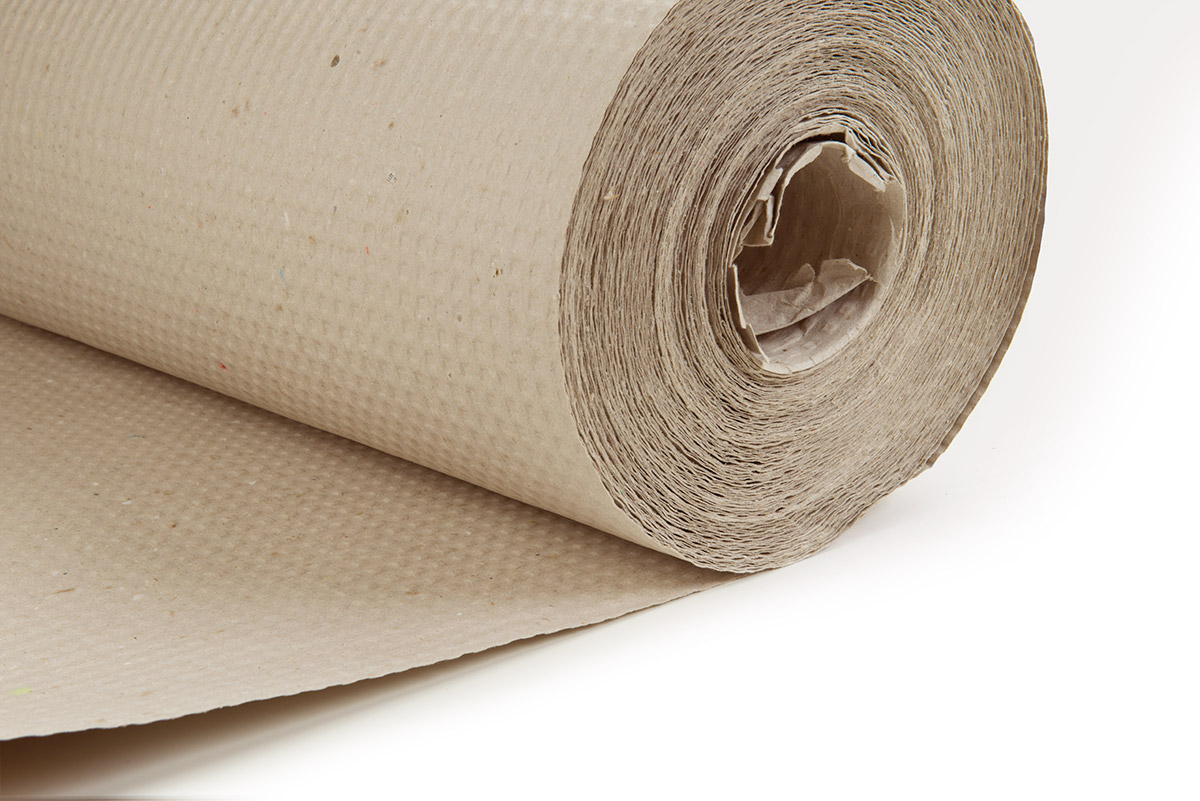
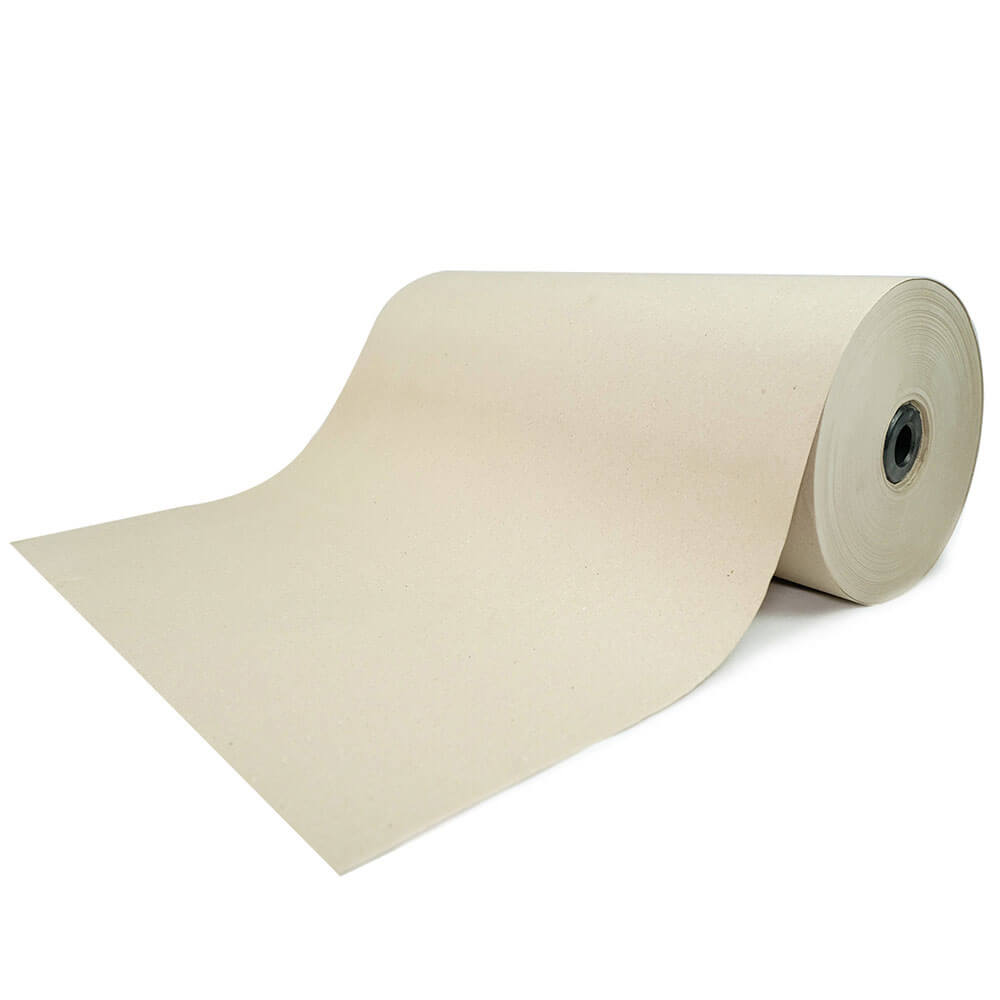
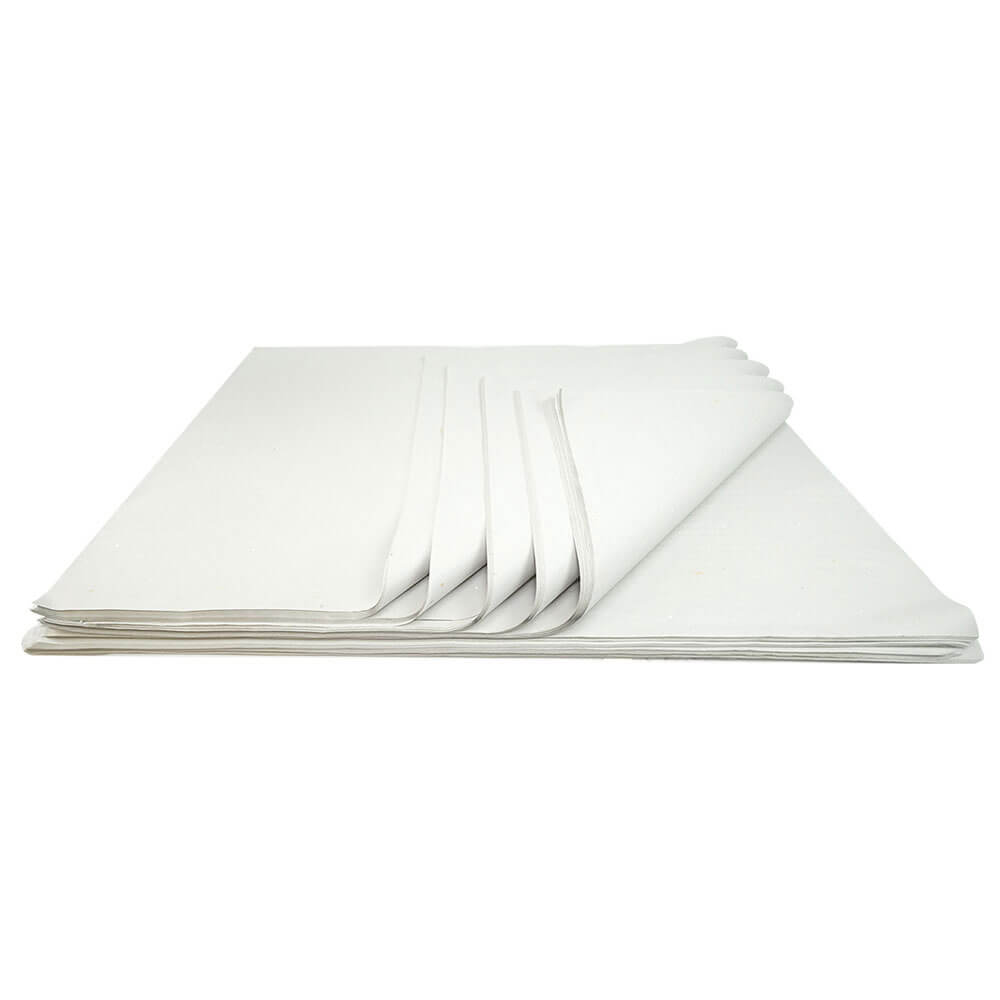


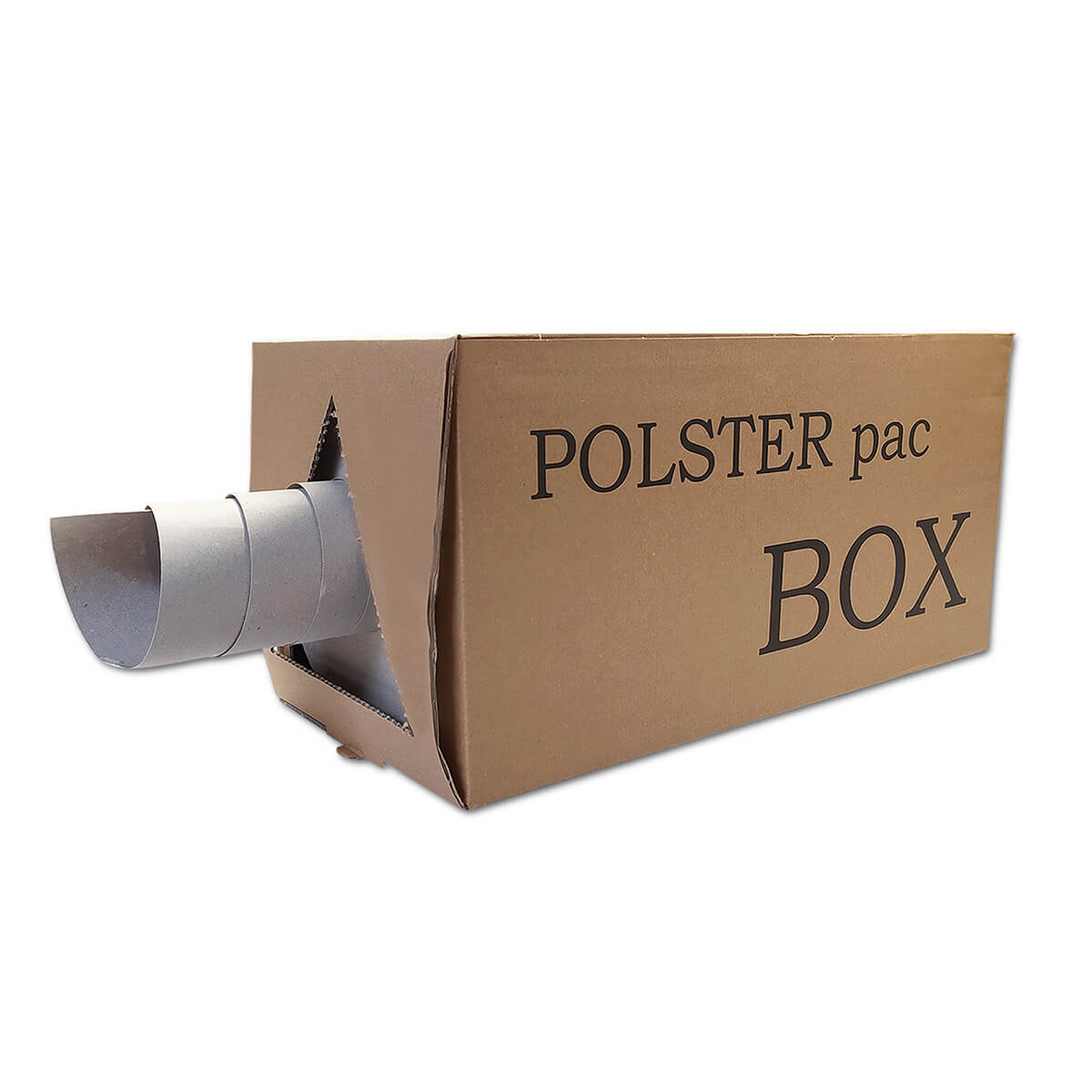
![Schrenzpapier sheets [format 50 x 75 cm | 100 g|m²] wrapping paper in kg Schrenzpapier sheets [format 50 x 75 cm | 100 g|m²] wrapping paper in kg](https://www.verpacking.com/media/bb/3b/f7/1685785655/schrenzpapier-bogen-format50x75cm-100g-m-2-packpapier-in-kg-1.jpg)
